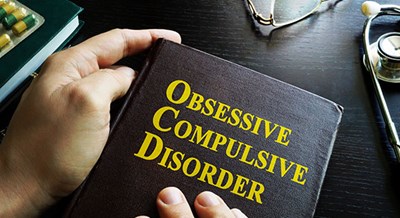As general practitioners (GPs), you often provide the first opportunity for patients to be diagnosed with BPAD; are the primary gatekeepers to support services; and often provide the most enduring support for people living with BPAD.
Supporting patients with BPAD is aided through careful assessment, seeking collateral information, establishing and maintaining links with referral and support services, and providing education and support to patients and their families.
What is BPAD?
BPAD is conceptualised as a cyclical mood disorder involving periods of profound disruption to mood and behaviour, interspersed with periods of full recovery or much improved function.
The key feature of BPAD is the experience of hypomania or mania – grandiose and expansive or irritable affect - associated with increased drive and decreased sleep, which ultimately can culminate in psychosis and exhaustion if left untreated.
Challenges of BPAD diagnosis
There are two different classification criteria for diagnosing BPAD. To warrant a diagnosis of BPAD, a patient must present with the criteria below.
|
International Statistical Classification of Diseases and Related Health Problems: 10th Revision ICD-10 |
Diagnostic and Statistical Manual of Mental Disorders DSM-5 |
|
Two discrete mood episodes, at least one of which must be hypomania or mania. |
At least a single episode of mania without any episode of depression or a single episode of hypomania with one major depressive episode |
Also, far from being a discrete diagnostic entity, there is increasing recognition of a spectrum of bipolar disorders that ranges from marked and severe mood disturbance into milder mood variations that become more difficult to distinguish from normal mood fluctuation.
Click here to see an illustration of the BPAD mood spectrum.
Undiagnosed and misdiagnosed BPAD
Unfortunately, for these and many other reasons, there are many patients who suffer the costly effects from being undiagnosed, misdiagnosed or having a significant delay in being diagnosed with BPAD. A large retrospective study of patients with BPAD reported that there was an average eight years’ delay from a person’s first recollected mood episode to receiving a diagnosis of BPAD (Mantere et al, 2004).
Measurement of the incidence of BPAD is fraught with difficulty, and, because sub-clinical symptoms of the disorder are common, there can be substantial delays of many years’ duration before presentation to services. Presentation to services is often initially with depression, ill-defined psychotic symptoms or an impulse control problem, so the nature of the BPAD is often only diagnosed some years after the initial presentation.
Costs of delay in diagnosis and misdiagnosis
Without appropriate treatment, the natural course of BPAD tends to worsen. Over time, a person may suffer more frequent (more rapid-cycling) and more severe manic and depressive episodes than those experienced when the illness first appeared. But ,in most cases, proper treatment can help reduce the frequency and severity of episodes.
Cognitive impairment associated with number of mood episodes:
Importance of early diagnosis and treatment
BPAD is not only a disorder of mood and behavioral alterations but also of cognitive impairment. In 146 euthymic outpatients with unipolar and BPADs, a higher number of prior mood episodes was associated with increased cognitive impairment. (Kessing LV. Cognitive impairment in the euthymic phase of affective disorder. Psychol Med. 1998;28(5):1027–1038.)
What is the importance of screening in primary care?
GPs are positioned to play a crucial role in the management of mania and its less severe form, hypomania. In this regard, there are two aspects of an elevated mood worth considering:
- The early identification of an evolving mania
- Detecting episodes of hypomania that might historically have been overlooked.
Importance of collateral information from loved ones if hypomania/mania is suspected
Interviewing the patient alone may fail to identify any overt features of an elevated mood. In such situations, the individual may be well capable of containing themselves for limited periods of time. Therefore, collateral information from a partner, relative or close friend, is crucial.
Where a patient presents with hypomania/mania symptoms and has a previous episode of treatment for depression, the possibility of BPAD should be considered.
A number of screening tests have been devised to assist in the recognition of a BPII mood disorder. A good example is The Mood Disorder Questionnaire (R Hirschfield et al, Am J Psychiatry, 2000, 157: 1873-1875). This screening tool has good sensitivity (0.73) and very good specificity (0.90) in an outpatient setting.
Also, a simple single question to screen for a hypomanic mood is:
“Have you ever in your life experienced an episode lasting three or more days when you needed much less sleep than normal, yet had more energy and activities than usual, felt ‘wound up’ or ‘on top of the world’ and had racing thoughts?” (C Lake & J Baumer, Current Opinion in Psychiatry, 2010, 33: 157 – 166.)
Unipolar or bipolar depression
Although mania or hypomania are the defining characteristics of BPAD, throughout the course of the illness, depressive symptoms are more common than manic symptoms. People with BPAD spend a substantial proportion of time with syndromal or sub-syndromal depressive symptoms. It is always worth considering the possibility that a patient presenting with depressive symptoms could have bipolar depression, and to screen for this possibility with the question above.
Major depressive episodes in BPAD are similar to those experienced in unipolar major depression. Sometimes symptoms of mania, such as elation or racing thoughts, are seen briefly for a few hours at a time in bipolar depression but not always (Bauer et al., 2005).
Screening for hypomania (BPII)
How does BPAD present?
BPAD can commence in childhood, but onset is more common in adolescence or early adulthood. A peak in onset rate occurs between the ages of 15 and 19 years, although there may be a second smaller peak of onset of Bipolar I and II disorder in later life (45 to 54 years) (Kroon et al., 2013; Merikangas et al., 2007b; Kroon et al., 2013;).
Women with BPAD are at risk of a significant mood disturbance both during pregnancy and in the post-partum period, most commonly in the first four weeks.
Patients with BPAD present in the primary care setting with a wide range of symptoms, including depression, anxiety, mood swings, difficulty sleeping, irritability, fatigue, and inability to focus and concentrate.
Patients with BPAD may also may exhibit physical consequences of their illness, such as alcohol-related problems or sexually transmitted or drug-related infections. Patients' social histories often uncover other sequelae of the illness, including relationship and marital problems, financial trouble, erratic occupational histories and legal issues, which can make diagnosis of the underlying mood disorder more challenging.
Risk assessment and management of patients living with BPAD
Compared with the general population, on the Standardised Mortality Rate (SMR) for patients diagnosed with BPAD, suicide is much higher. Approximately 17% of people with bipolar I disorder and 24% with bipolar II disorder attempt suicide during their illness (Rihmer and Kiss, 2002). Annually, around 0.4% of people with BPAD will die by suicide, which is vastly greater than the international population average of 0.017% (Tondo et al, 2007). Early diagnosis and effective treatment can provide the opportunity to lower the suicide risk for patients with BPAD.
Impact on carers
To be involved in the care of a family member with elevated mood is associated with increased levels of stress and distress. Carers might require permission to look after themselves, as well as being given information and support as to how to access further information, such as through Aware.
Advice and support
For more information and guidance, you may wish to signposting or referring your patients to community mental health teams; crisis home-based treatment services; Acute day hospital; or assertive outreach teams.
Our Bipolar Education Programme also offers group support for those with a diagnosis of BPAD.
-
Informal supports
Aware offers information on bipolar disorder and on supporting people going through mental health difficulties. Shine also provides information about bipolar disorder.
You can watch a video from Dr Lisa Lawless, a GP, discussing her work with patients living with bipolar.
The Health Service Executive (HSE) hosts a Bipolar Disorder Support Group.
-
Resources
Continue to…
See more upcoming GP webinars and conferences for 2021





